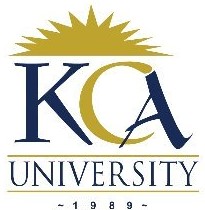
UNIVERSITY EXAMINATIONS: 2011/2012
EXAMINATION FOR THE BACHELOR OF SCIENCE IN
INFORMATION TECHNOLOGY
BIT 4302 TELECOMMUNICATIONS
DATE: AUGUST, 2013 TIME: 2 HOURS
INSTRUCTIONS: Answer Question ONE and any other TWO
QUESTION ONE
a) State the following basic features of GSM:
(i) Access method [1 Mark]
(ii) BS transmission band [1 Mark]
(iii) MU transmission band [1 Mark]
(iv) Channel bandwidth [1 Mark]
(v) Users per channel [1 Mark]
b) Describe the association process (active process) which a mobile client uses to
connect to a wireless Access Point. [6 Marks]
c) Discuss the importance of telecommunications and computer networks in today’s
business. [6 Marks]
d) Explain briefly the four major constraints that face converged enterprise
networks. [4 Marks]
e) The switching network could be packet switched or circuit switched. Briefly
highlight the features of each type of switching network. [6 Marks]
f) Describe briefly the three types of signals that are used to determine the type of
media to use in a communication systems. [3 Marks]
QUESTION TWO
a) GSM uses a frame structure in which each frame consists of time slots, each time
slot contains 156.25 bits, and data are transmitted at 270.833 kb/s over the
channel. Find:
(i) The time duration of a bit [2 Marks]
(ii) The time duration of a slot [2 Marks]
(iii) The time duration of a frame [2 Marks]
b) One primary difference between a WAN and a LAN is that a company or
organization must subscribe to an outside WAN service provider to use WAN
carrier network services. A WAN uses data links provided by carrier services to
access the Internet and connect the locations of an organization to each other, to
locations of other organizations, to external services, and to remote users. The
WAN access Physical layer describes the physical connection between the
company network and the service provider network. Describe the following
physical WAN connections:
(i) Customer Premises Equipment (CPE) [2 Marks]
(ii) Data Communications Equipment (DCE) [2 Marks]
(iii) Demarcation Point [2 Marks]
(iv) Local Loop [2 Marks]
c) WANs use numerous types of devices that are specific to WAN environments.
Describe the following WAN devices:
(i) Modem [3 Marks]
(ii) CSU/DSU [3 Marks]
QUESTION THREE
a) Discuss briefly the importance of error detection and correction, flow control and
recovery in data communications. [5 Marks]
b) How can network administrators accelerate the packet dispatching for delaySensitive flows? [6 Marks]
c) Discuss the three major transmission impairments experienced by signals.
[6 Marks]
d) Briefly discuss the characteristics of a good data communication system.
[3 Marks]
QUESTION FOUR
a) Discuss the three most common causes of congestion in a network. [6 Marks]
b) Describe the following main connection methods used by home and small
business users:
(i) DSL [2 Marks]
(ii) Cable modem [2 Marks]
(iii) Satellite [2 Marks]
c) With the aid of relevant diagrams, describe the principal components of a digital
communication system. [8 Marks]
QUESTION FIVE
a) Metro Ethernet is a rapidly maturing networking technology that broadens
Ethernet to the public networks run by telecommunications companies. IP-aware
Ethernet switches enable service providers to offer enterprises converged voice,
data, and video services such as IP telephony, video streaming, imaging, and data
storage. By extending Ethernet to the metropolitan area, companies can provide
their remote offices with reliable access to applications and data on the corporate
headquarters LAN. Outline the benefits of Metro Ethernet. [6 Marks]
b) List and briefly describe the trade-offs that one needs to make before encoding
data. [6 Marks]
c) Distinguish between backward error correction and forward error correction.
[4 Marks]
d) Describe how TCP implements congestion control
[4 Marks]
